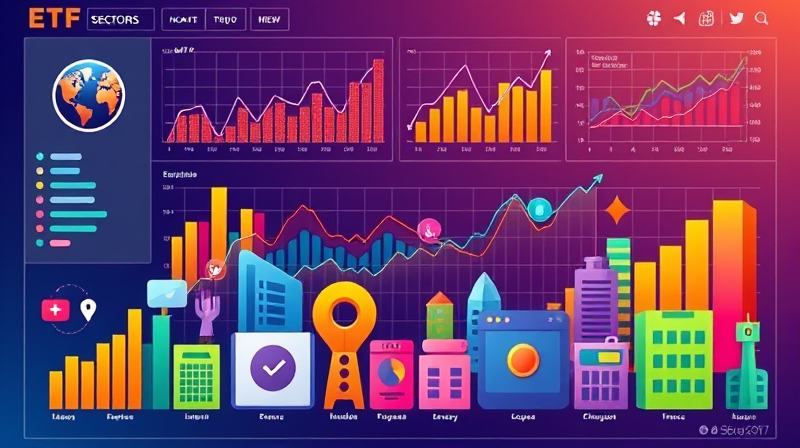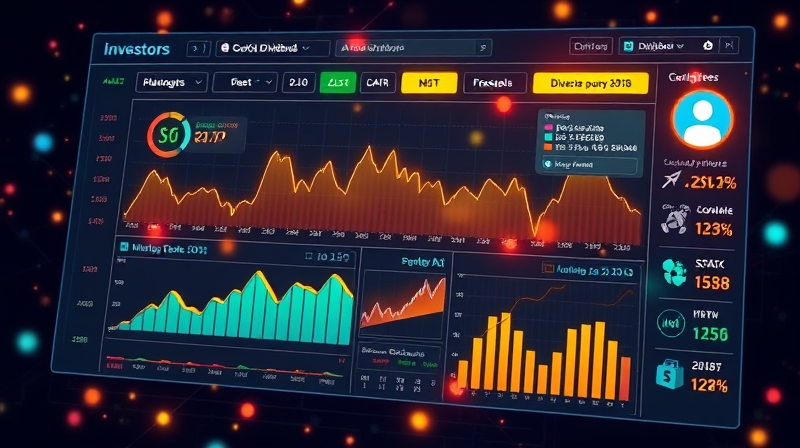
Modern investors recognize the power of exchange traded funds to capture growth across industries, protect against downturns, and refine risk management. Sector ETFs deliver targeted exposure to technologies, health care breakthroughs, energy transitions, and financial innovations. By using a robust analyzer, you can identify the most compelling sector opportunities and build a resilient portfolio that adapts to changing market landscapes.
Exchange traded funds, known as ETFs, pool assets to track indexes that represent market segments, industries, or investment themes. Sector ETFs focus on single industries like technology, health care, financials, energy, and consumer goods. They allow investors to harness growth in specific markets without selecting individual stocks.
Comparing sector ETFs is essential for portfolio diversification and risk management strategies. Evaluating multiple ETFs across sectors reveals opportunities to rebalance weights, exploit market cycles, and limit correlation risks.
Different sectors perform uniquely over economic cycles. Technology often leads during innovation booms, while utilities and consumer staples can offer stability in downturns. Understanding sector rotation and macro drivers is key to staying ahead of the curve.
A variety of platforms offer comprehensive analyzers to compare sector ETFs. These tools simplify side-by-side evaluations of performance, costs, holdings, and risk metrics, empowering you to make data-driven decisions.
When analyzing sector ETFs, review a consistent set of metrics to determine suitability for your strategy. Each metric sheds light on cost, performance, risk, and portfolio fit.
Follow a systematic approach to harness the full potential of comparison tools:
1. Input ETF tickers or select sector filters in the analyzer’s search interface. Common tickers include XLK for technology, XLV for health care, XLF for financials, and XLE for energy.
2. Generate side-by-side tables and charts showcasing key metrics such as returns, costs, and allocations. Use interactive filters to focus on periods, fees, or risk thresholds.
3. Dive into holdings analysis to uncover top contributors and track emerging stocks within each ETF. Evaluate concentration and diversification across industries.
4. Analyze fund flows and trading volumes to detect shifts in institutional and retail sentiment. A sudden surge in inflows may signal growing confidence.
5. Save custom watchlists and set alerts for quarterly rebalancing triggers, expense ratio changes, or volatility spikes.
To illustrate, we compare two leading technology sector ETFs: the Technology Select Sector SPDR Fund (XLK) and the Vanguard Information Technology ETF (VGT). Below is a snapshot of their metrics:
This comparison reveals nearly identical cost structures and similar top holdings. However, VGT’s slightly higher AUM and marginally stronger returns may appeal to growth-oriented investors seeking enhanced market exposure. XLK’s broad sector representation can benefit those prioritizing liquidity and trading flexibility.
We can also compare healthcare ETFs like XLV versus VHT to uncover differences in exposure to pharmaceuticals, biotech, and medical devices. XLV’s top weighting in pharmaceutical giants may offer steady dividends, while VHT’s tilt toward large-cap biotech stocks often drives higher volatility and growth potential.
Beyond basic comparison, modern analyzers offer advanced tools:
Holdings analysis breaks down each ETF by individual stocks and industries, highlighting contribution to overall performance. A platform like Koyfin shows how large-cap tech giants or emerging semiconductors drive returns.
Backtesting modules in ETFreplay allow simulation of sector rotation strategies, testing historical performance of rolling allocations. This helps refine timing models and assess drawdown resilience.
Incorporate ESG and factor analysis by comparing environmental, social, and governance scores across sector ETFs, uncovering sustainable investment opportunities aligned with your values.
Custom dashboards and alerts keep you informed of key threshold breaches, fund flow surges, or sudden volatility spikes, enabling proactive portfolio adjustments.
Constructing a balanced portfolio involves selecting sector ETFs with low correlation and complementary risk profiles. Consider blending growth segments like technology and consumer discretionary with defensive sectors such as utilities and health care.
Use the analyzer to:
Review correlation matrices to select sectors with minimal overlap, reducing portfolio volatility and optimizing risk-adjusted returns.
By adjusting sector weights in response to macroeconomic indicators—like rising interest rates or shifting consumer trends—you harness dynamic allocation strategies that adapt to market cycles.
To replicate this analysis:
Embrace the clarity that comes from systematic analysis, transforming uncertainty into strategic foresight and unlocking the full potential of sector ETFs in your journey toward financial independence.
Start exploring today and transform how you compare ETFs across sectors, unlocking new pathways to financial growth and stability.
References













